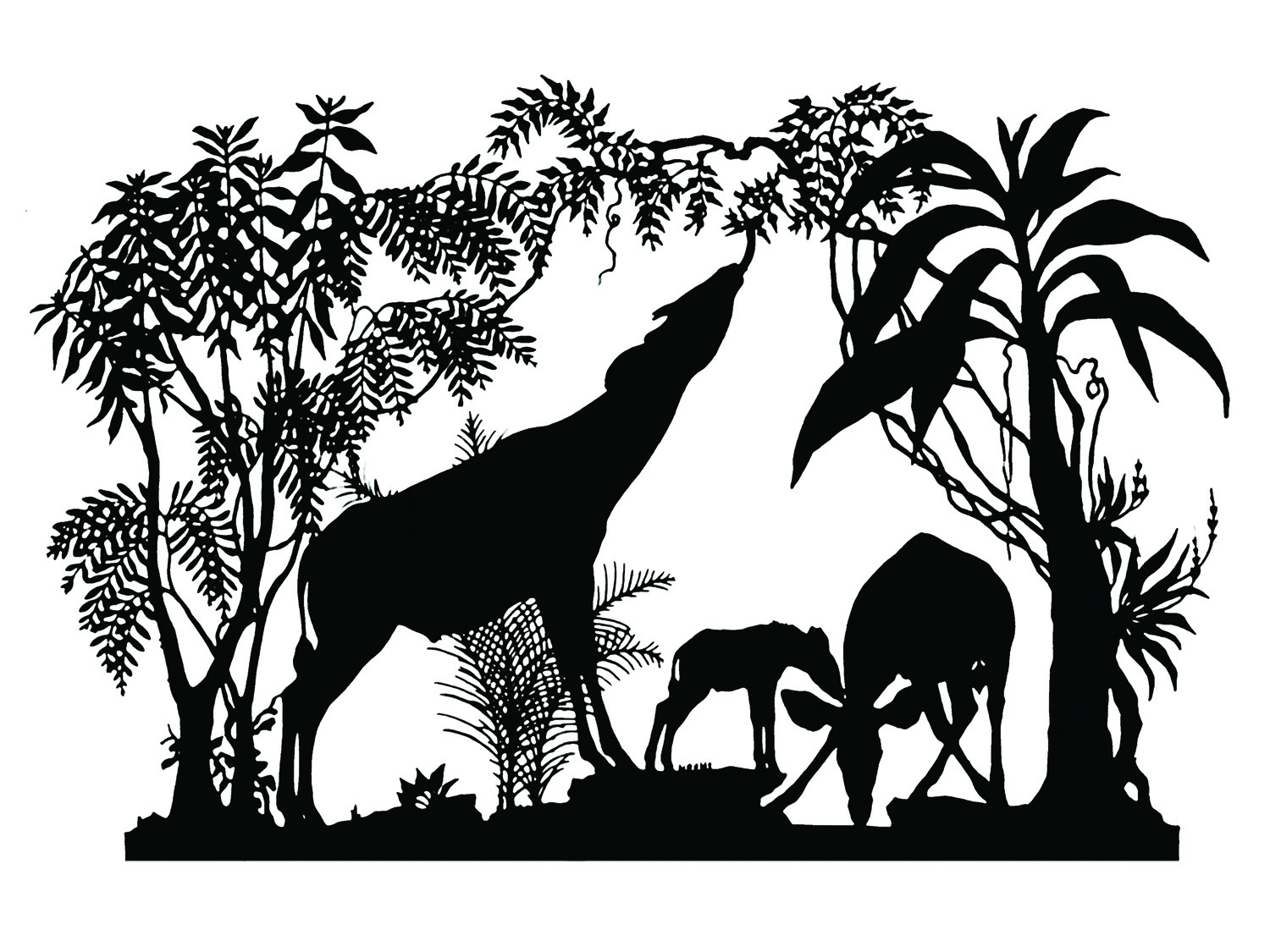
Fig. 1. Silhouette of okapis by Ugo Mochi (1889–1977), c. 1953, originally published in Mochi and T. Donald Carter, Hoofed Mammals of the World (New York: Charles Scribner’s Sons, 1953). Cut paper on paper, 9 by 11 1⁄2 inches. Private collection.

Fig. 2. Gerenuks by Mochi. Cut paper on paper, 5 by 10 inches. Private collection.
When Charles Scribner’s Sons decided to publish an illustrated book on hoofed mammals in 1953, it was probably not a subject with promising financial prospects—a worthy scientific treatise, perhaps, but certainly not something expected to appeal to the general public. Yet when the book appeared, its dazzling black-and-white graphics made it one of Scribner’s most appealing offerings of the year.1 The text, written by the American Museum of Natural History mammalogist T. Donald Carter, On the Art of Ugo Mochi and other Past Masters of the Animal Silhouette was substantive and scientifically solid, but it was the book’s animal silhouette illustrations by the Italian-born artist Ugo Mochi that made it stand out (Fig. 1). Building on a long tradition of silhouette making, Mochi (pronounced “Mokee”) changed the public’s perception of the art form from one of human representation to one of scientific documentation. All the while, he managed to imbue his work with artistic flair that still appeals to collectors today.
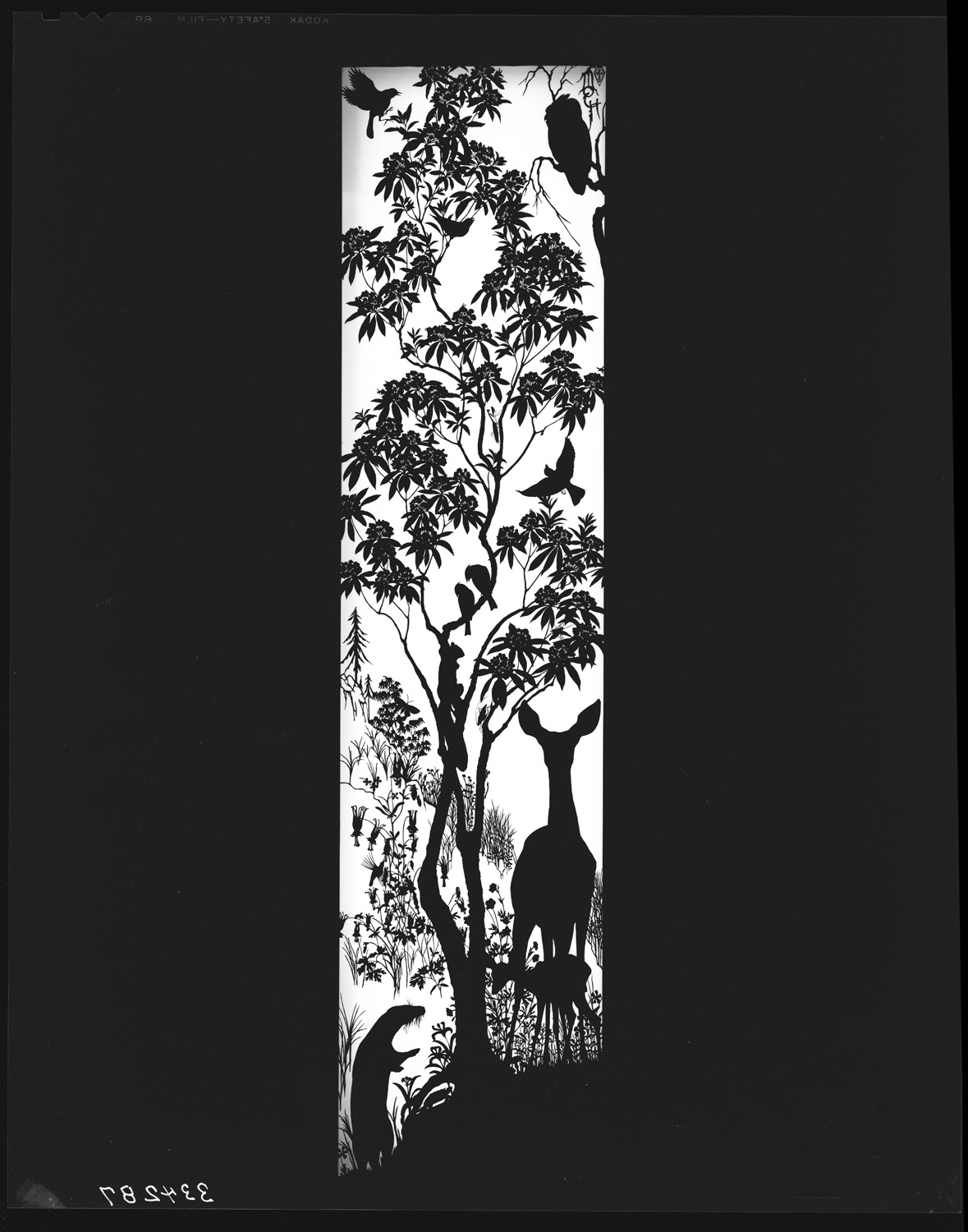
Fig. 3. Flowering tree by Mochi, 1969. Cut black paper, 94 by 22 inches. Originally, this and the example in Fig. 4 were among more than a dozen Mochi silhouettes mounted on glass, backlit, and hung in the cafeteria of the American Museum of Natural History in New York. American Museum of Natural History, New York.

Fig. 4. South American jungle scene by Mochi, 1969. Cut black paper, 94 by 22 inches. American Museum of Natural History.
Mochi had displayed such early ability in art that he entered the Florence Academy of Fine Arts at the age of ten. He also trained and worked as a lyric tenor. While he was in London on a singing engagement in 1922, he mounted an exhibition of his artwork. It was an unexpected success. Among the luminaries who purchased some of his creations were Queen Mary and the Duke and Duchess of York. Buoyed by this success, he redoubled his efforts in art and never looked back.2 He was as comfortable working in three dimensions as he was in two, but it is for his cutouts that he is best remembered today. Working for Scribner’s, Mochi would go on to create several more equally stunning books, including A Natural History of Giraffes (1973), A Natural History of Zebras (1976), Horses as I See Them (1980), and African Images (Figs. 7, 8), all with accompanying text by the naturalist-artist Dorcas MacClintock. For public display at the American Museum of Natural History in New York, he created over a dozen large black-and-white panels featuring an array of wildlife subjects ranging from penguins to dinosaurs (Figs. 3, 4).
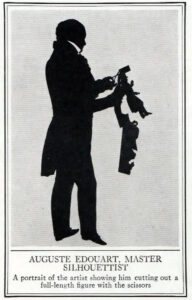
Fig. 5. Self-portrait cutting a silhouette by Auguste Édouart (1789–1861). Whereabouts unknown.
While profile views of human beings have long been the most popular and widespread form of silhouette, a few artists have chosen natural history subjects. Ugo Mochi may have been the most accomplished of them. Unlike most of the others, he often presented his animals in three-quarter view or even head-on, and he almost always showed them demonstrating some sort of typical behavior. Mochi called his creations “shadow portraits,” disparaging the term silhouette, which he considered to be too negative and dismissive. His interpretation was correct. Although silhouettes are now highly revered, when the word was first coined to describe a cutout human portrait, the term indicated the minimal cost of hand-cut images.
Étienne de Silhouette (1709–1767), the person who inadvertently gave his name to the form, was a French finance minister during the reign of Louis XV. During his brief, eight-month tenure as controller general of the country, he tried to curb the spiraling deficit brought on by France’s Seven Years War with Great Britain (1756–1763) by raising taxes in unprecedented ways. His stringent monetary policies were highly unpopular, and made their instigator’s name synonymous with anything that was miserly, cheap, or unusually austere. Since the cutout paper portraits were far less expensive than painted portraits, lacked many of their details or color embellishments, and were made from more fragile materials, they were given the pejorative name “silhouettes.” There are three forms of silhouettes. The simplest are those painted in black on ivory, plaster, paper, card, or in reverse on glass. A second type is the “hollow-cut,” in which an image is traced on and then cut away from light colored paper, leaving a hole on the sheet, which is then laid atop a dark background. Finally, there is the “cut and paste” image, in which the figure is cut out of dark paper (usually freehand, but sometimes with the help of a machine) and then pasted onto a light background. Sometimes, this was done in reverse (Figs. 12a, 12b).

Fig. 6. Mochi with one of his subjects at the Bronx Zoo in a photograph by Sam Dunton (1911–1974), staff photographer at the zoo from 1931 to 1974, c. 1955. Private Collection.
Ugo Mochi used a sharp lithographer’s knife to create his images. After doing an enormous amount of research and, whenever possible, visiting the zoo to draw each subject from life (Fig. 6), Mochi selected one or more of his final sketches, placed them on top of a sheet of black paper, and cut both sheets together atop a thick glass table lit from beneath, which enabled him to monitor the penetration of his cut. “The research he did before each cutting was intense, whether he was making a cut of an elk or of a sixteenth-century sailing vessel,” recalls his daughter, Jeanne Tartaglia. “His cutting technique was flawless, but it was his artistry in composition, and his accuracy in capturing the form and motion of the animals he depicted that make his cutouts stand out.”3
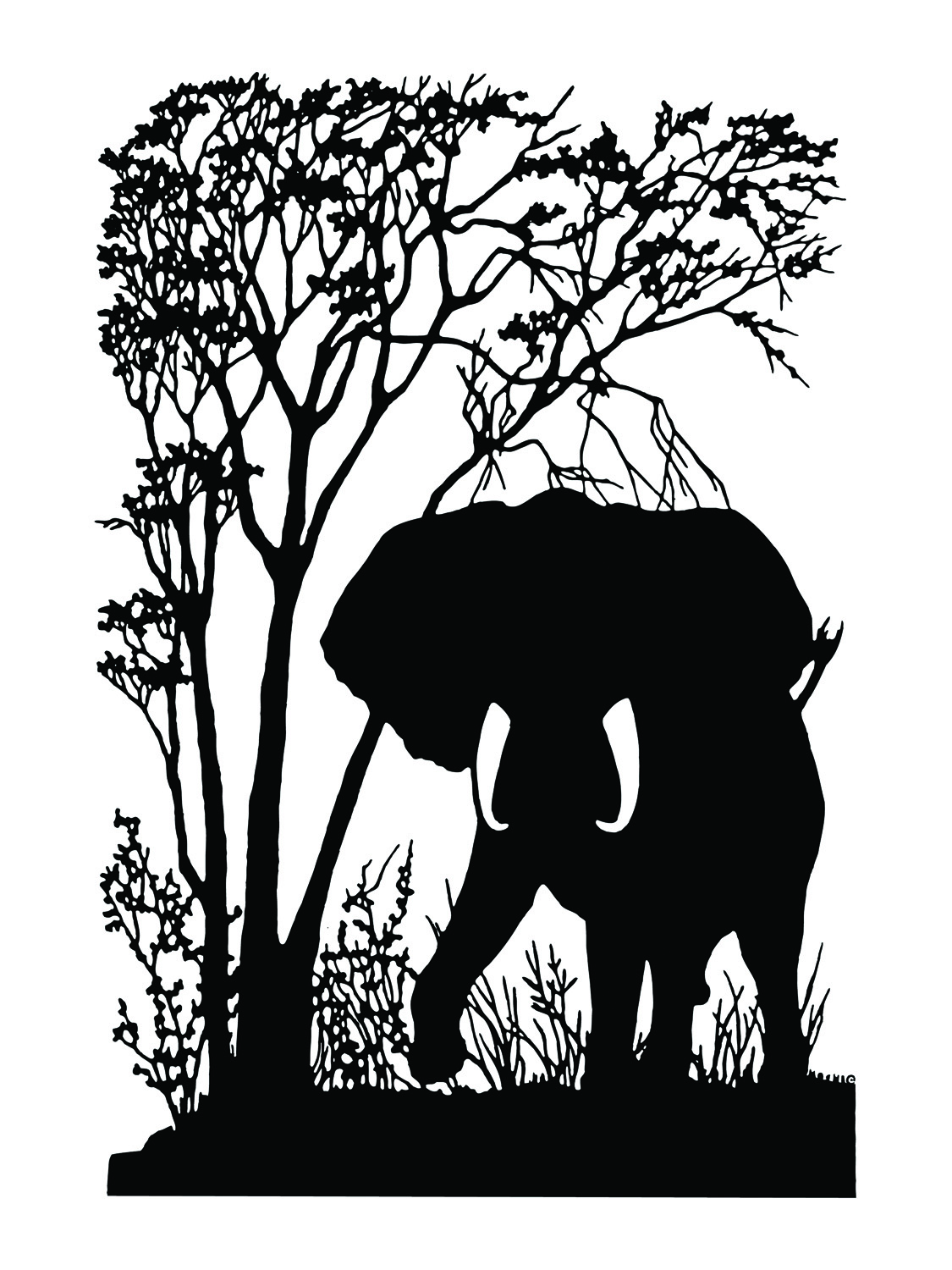
Fig. 7. African elephant by Mochi, c. 1984, published in Mochi and Dorcas MacClintock, African Images (Charles Scribner’s Sons, 1984). Cut paper on paper, 7 1⁄2 by 10 3⁄4 inches. Private collection.

Fig. 8. Giant sable antelope by Mochi, originally published in Mochi and MacClintock, African Images. Cut paper, 6 by 8 1/4 inches. Private collection.
It is hard to say when and where the art of the silhouette was invented, but it began to take on popularity as an inexpensive form of portraiture long before its name was altered through association with Étienne de Silhouette. In Germany, Philipp Otto Runge (1777–1810) was very successful at creating painted and cut portrait bust silhouettes. He also made paper cutouts of botanical specimens, animals, landscapes, and full figures. Earlier, the Swiss artist Jean Huber (1721–1786) made both portraits and intricate, complex landscapes and tableaux from cut paper and parchment. His silhouettes were highly praised by his contemporary, French philosopher and art critic Denis Diderot.
Jacques-Laurent Agasse, the Swiss painter best known for his magnificent oil paintings of animals, cut his own elaborate landscapes in the style of Huber (Figs. 12a, 12b). As impressive as his depiction of vegetation may be, it was his deep knowledge of animal anatomy and behavior that distinguishes his paper cutouts from those of most of his contemporaries. Given the amount of time it must have taken him to create each of these scenes, one can only imagine that he made them for pleasure rather than commercial gain. While simple head and shoulder profiles can be cut in less than two minutes, these elaborate, outdoor scenes must have taken Agasse many hours to create.

Fig. 9. Hunting scene by George Schmidt (active 1863–1876), 1863. Cut paper, 10 1⁄2 by 12 1⁄2 inches (mat). American Antiquarian Society, Worcester, Massachusetts.
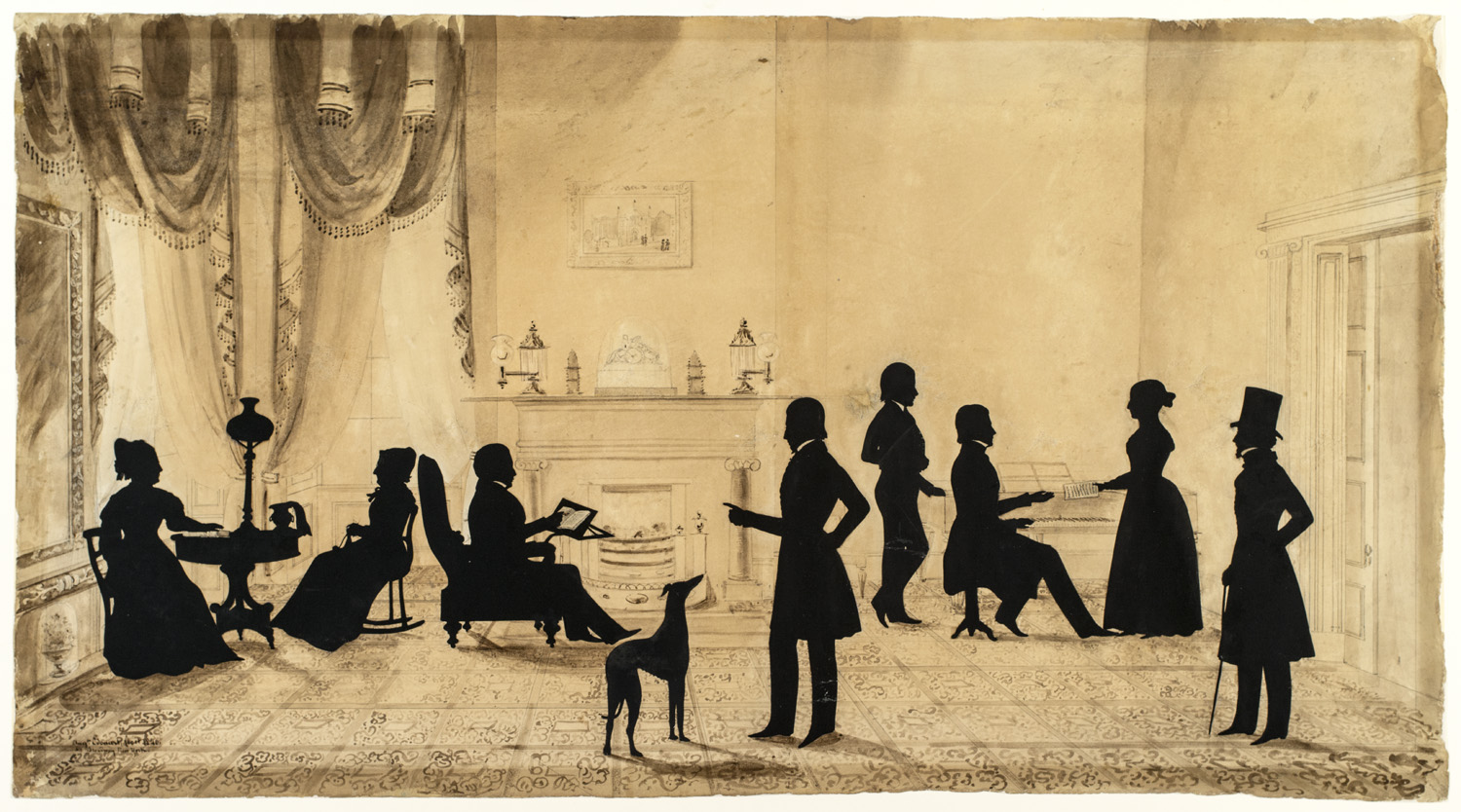
Fig. 10. George Ring and Family by Édouart, 1840. Black prepared-paper cutouts laid on beige paper with graphite, brown ink and wash, white gouache, and collaged paper, laid on Japanese paper, laid on board; 20 by 36 3/8 inches. New-York Historical Society.
One of the best-known silhouette makers of the early nineteenth century was Auguste Édouart (Fig. 5). A French-born portrait artist who found patronage from well-heeled clients in England, Scotland, and the United States, he had an almost entirely human focus. He did sometimes include animals in his work, but only as extra props for his domestic interiors (Fig. 10).4
While most of Édouart’s subjects are shown in domestic interiors, other artists chose outdoor settings for their subjects. The life-like landscape vignettes they created often took the form of hunting scenes, which gave the artists a chance to integrate human figures, vegetation, and wildlife, and demonstrate their paper-cutting virtuosity (Fig. 9).
Some artists dispensed with backgrounds but used animals to create humorous scenes in which the hierarchical order of nature was reversed. S. L. Brierly, an English silhouette cutter from the middle of the nineteenth century, depicted a rotund human walking behind a pig on its four trotters in one scene. In another, the pig walks on its hind legs and the person is on all fours (Fig. 11a). On the back are another three scenes, including another reversal of the traditional animal-human role: a man pulling a donkey in a cart (Fig. 11b). Whether they were made for sale or for the artist’s own amusement is not known.5
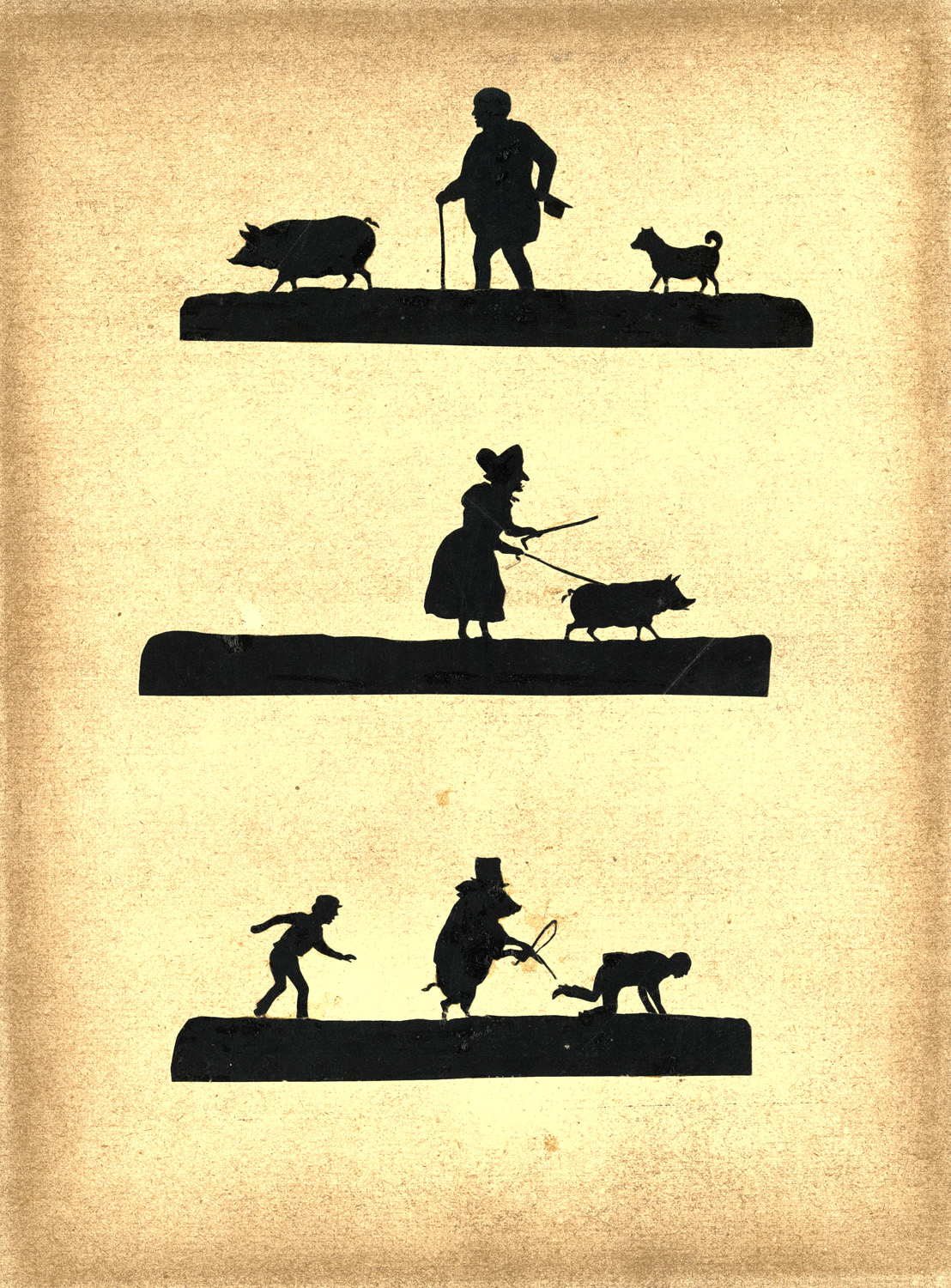
Figs. 11a, 11b. Front and back of a sheet with silhouettes by S. L. Brierly, English, 1857. Inscribed “Brierly/ 1857” in brown ink on an old label on the back of the frame (not shown). Cut paper on paper, 8 3⁄4 by 6 3/8 inches (sheet, by sight). Collection of Roberta J. M. Olson and Alexander B. V. Johnson.
 While Ugo Mochi is the only silhouette artist to make his living cutting “shadow portraits” of animals, Felix Martin Miller, a French-born, British-trained draftsman and sculptor, may be the only other to depict a large number of wild species. Miller created extraordinary wildlife cutouts in the 1840s and kept them in an album now in the collection of Harvard’s Houghton Library. The opening page holds a silhouette of scissors and the words “The Animals, Birds, etc. contained herein were cut with a pair of Scissors without being penciled or traced.”6
While Ugo Mochi is the only silhouette artist to make his living cutting “shadow portraits” of animals, Felix Martin Miller, a French-born, British-trained draftsman and sculptor, may be the only other to depict a large number of wild species. Miller created extraordinary wildlife cutouts in the 1840s and kept them in an album now in the collection of Harvard’s Houghton Library. The opening page holds a silhouette of scissors and the words “The Animals, Birds, etc. contained herein were cut with a pair of Scissors without being penciled or traced.”6
Apart from seven different kinds of horses and twenty-four different breeds of dogs, all shown with props (Fig. 13), the rest of the subjects in his album of cutouts are wild animals. His meticulously cut images, all quite small in size, include bison (Fig. 14), elephants (Fig. 15), lions, reindeer (Fig. 16), rabbits (Fig. 17), mice, monkeys (Fig. 18), and both well-known and little-known birds from almost every part of the world (Fig. 19).
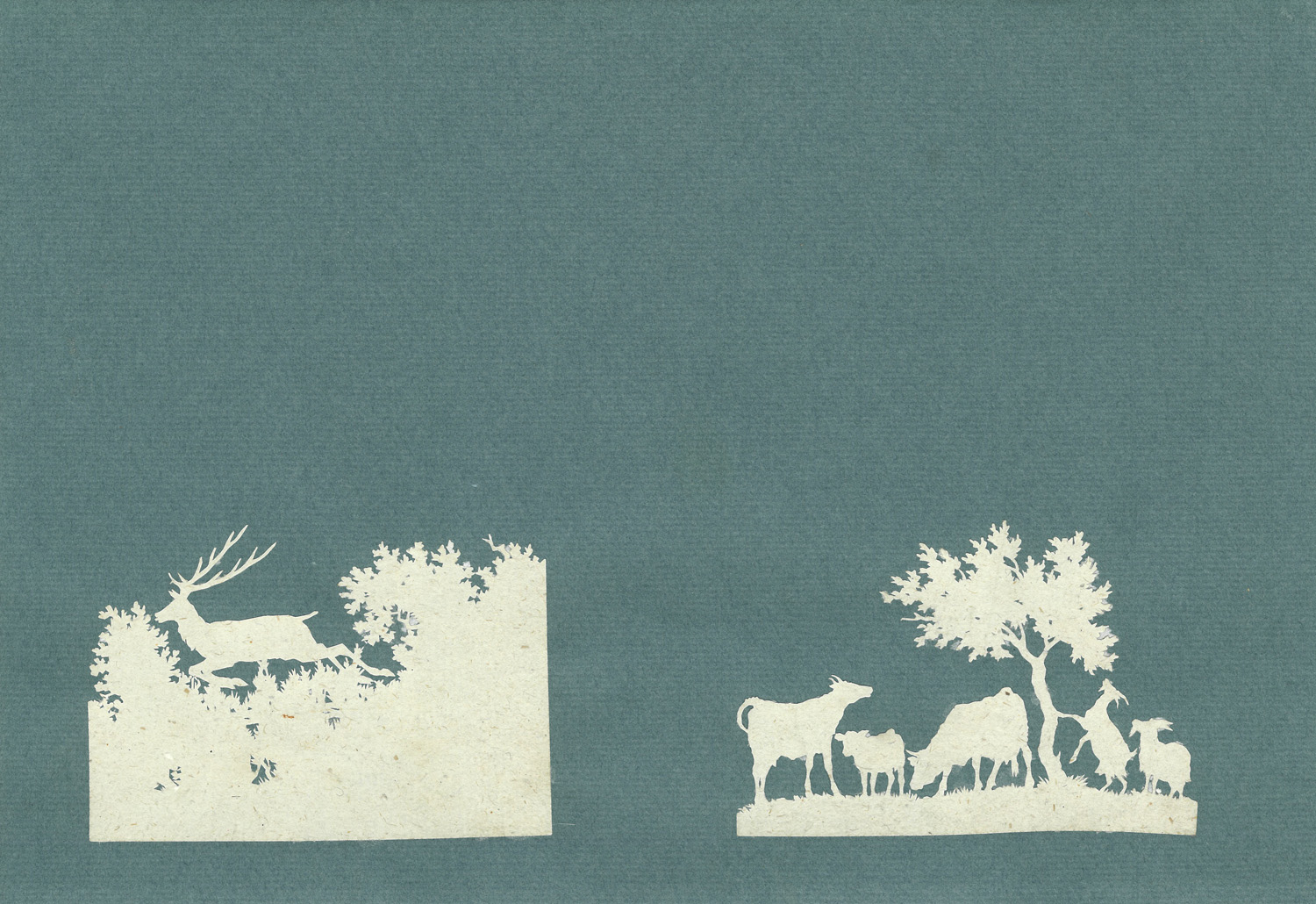
Figs. 12a, 12b. Silhouettes (leaping deer and three cows with two goats), both by Jacques-Laurent Agasse (1767–1849), c. 1800. White cutouts on colored paper; 2 1⁄4 by 3 1⁄2 inches (image, left) and 2 3/8 by 3 inches (image, right). Olson and Johnson collection.
The action that Miller imparted to many of his subjects, and the scientific information that he included beneath each picture suggests that he may have seen and based his silhouettes on living animals at the London Zoo, or in one of the many private menageries in England at the time, though he must also have referenced the scientific literature of his day.
The tooled leather album in which his cutouts are bound contains twenty-four primates, fifteen different kinds of wild sheep and goats, seven species of squirrels, twenty-six non-domestic cats, six opossums, five different kinds of wild pigs and boars, and 290 different wild bird species. Whenever he knew them, he included appropriate habitats relevant to the subjects depicted. We have almost no information about this album except that Miller wrote, rather ambiguously on its title page that it was “executed when I was aiming at something greater but knew not the way.” 7 Given the extraordinary results of his effort, it hard to imagine what greater object he could have had in mind, except, perhaps, a publication that never came to pass.
Despite their differences, one Italian-American, the other English; one a commercial illustrator, the other a sculptor who never published his “shadow scenes,” Ugo Mochi and Felix Miller were both masters in the specialized field of natural history silhouettes. Working more than a century apart, they serve as bookends in the field. The high bar they have set for this genre will be difficult to equal and impossible to surpass.
1 Ugo Mochi and T. Donald Carter, Hoofed Mammals of the World (New York: Charles Scribner’s Sons, 1953). 2 Bess Liebenson, “Nature in Just Two Dimensions,” New York Times, January 1, 1995. 3 Personal correspondence with Jean Tartaglia, July 10, 2022. 4 Unlike Mochi, he intentionally used the term “silhouette” to describe his work in an effort to distinguish what he was creating from the head and shoulder “shade” portraits that were created with a tracing machine (most often a physiognotrace, invented by Frenchman Gilles-Louis Chrétien in 1786), a method he found crude and lacking creativity. 5 For more on Brierly see E. Nevill Jackson, Silhouettes, A History and Dictionary (New York: Dover, 1981), an abridged reprint of Jackson’s Silhouette s: Notes and Dictionary (London: Methuen, 1938). 6 The Miller album, in the Houghton Library at Harvard University (MS Typ 88; coll. # 990095418870203941), was the gift of Philip Hofer and Joseph Verner Reed, 1954. 7 Ibid.
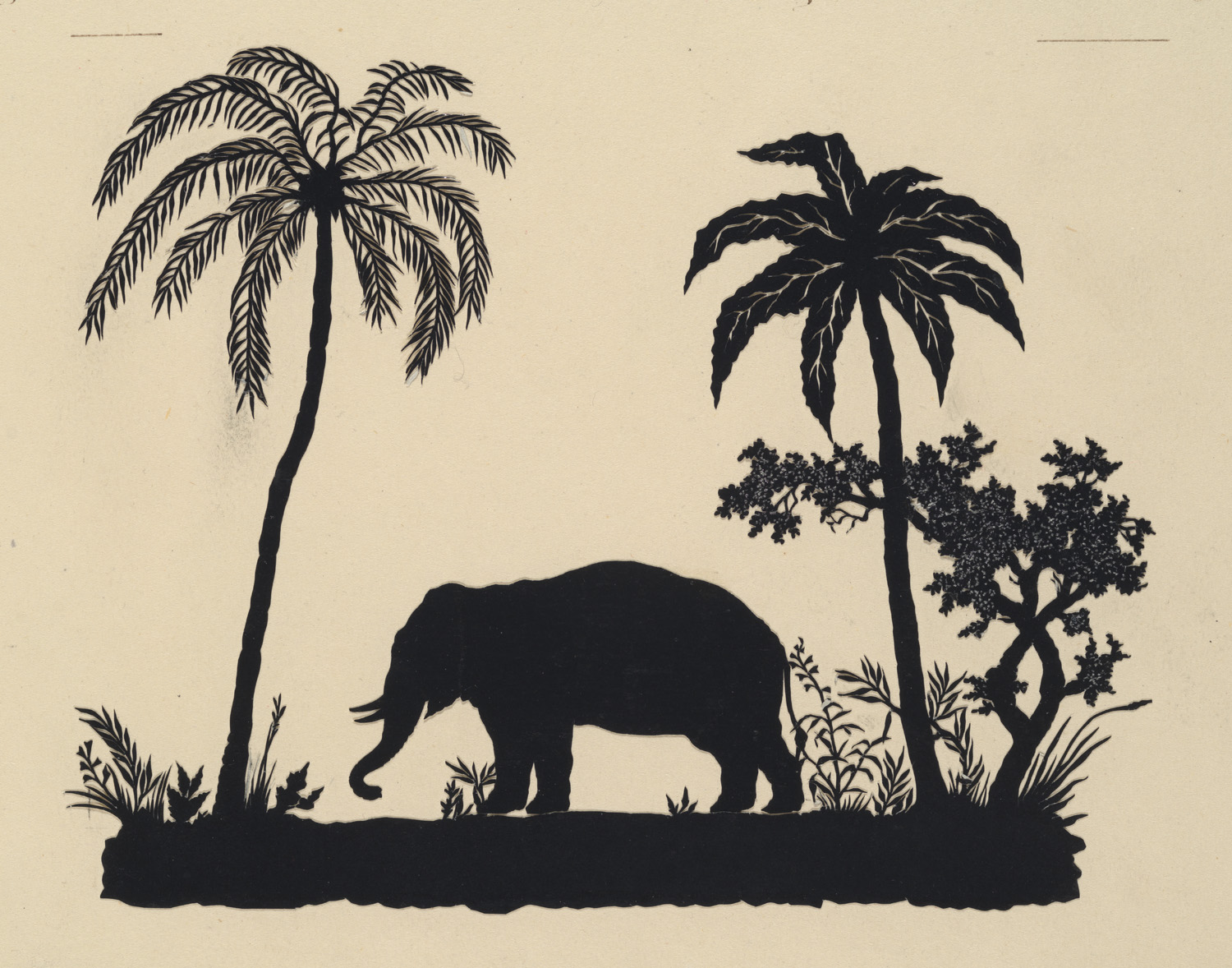
Fig. 15. Indian elephant by Miller, 1840s. Cut paper detail from an album page measuring 16 by 12 1/8 inches. Houghton Library.
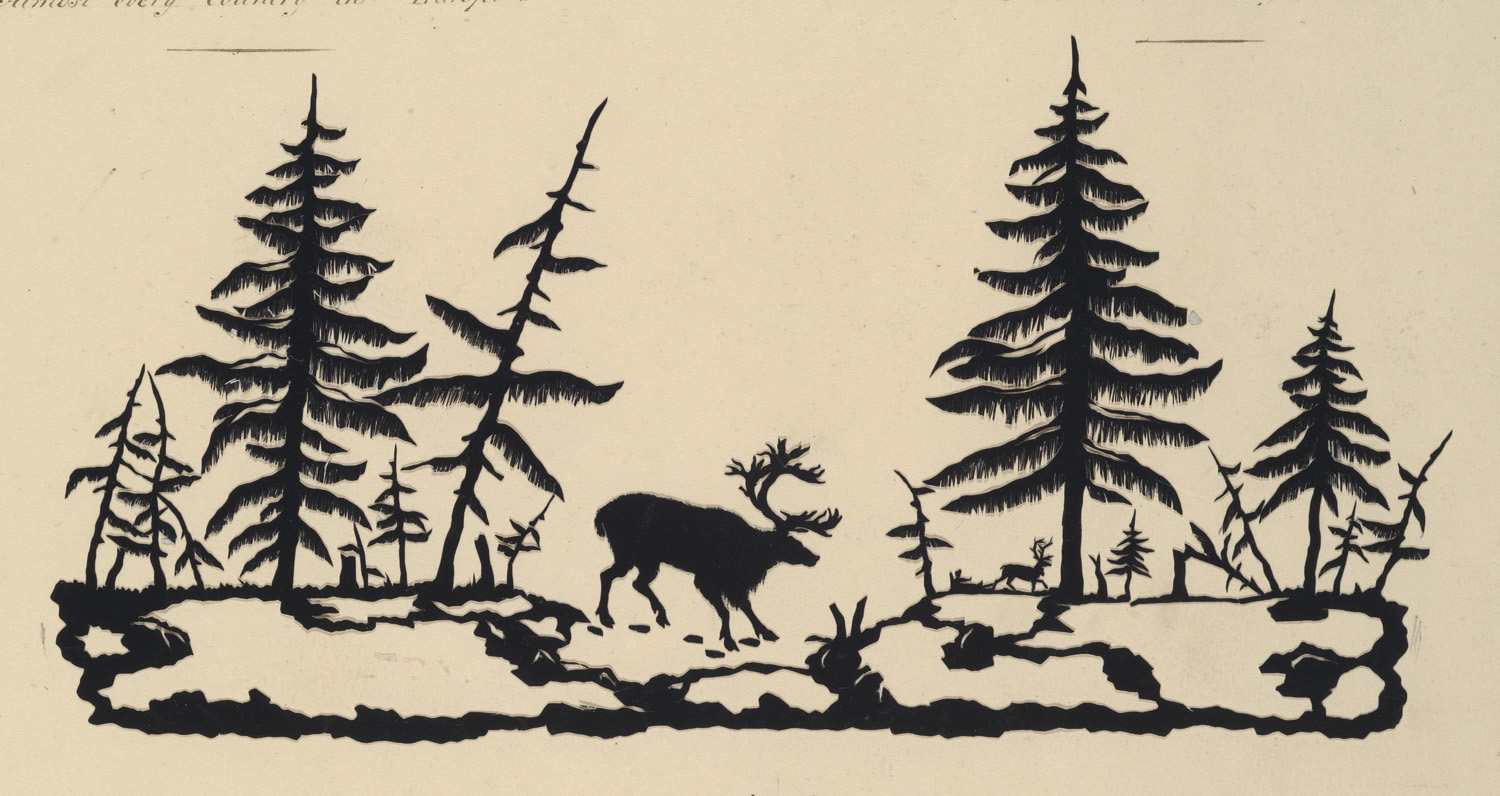
Fig. 16. Reindeer by Miller, 1840s. Cut paper detail from an album page measuring 16 by 12 1/8 inches. Houghton Library.
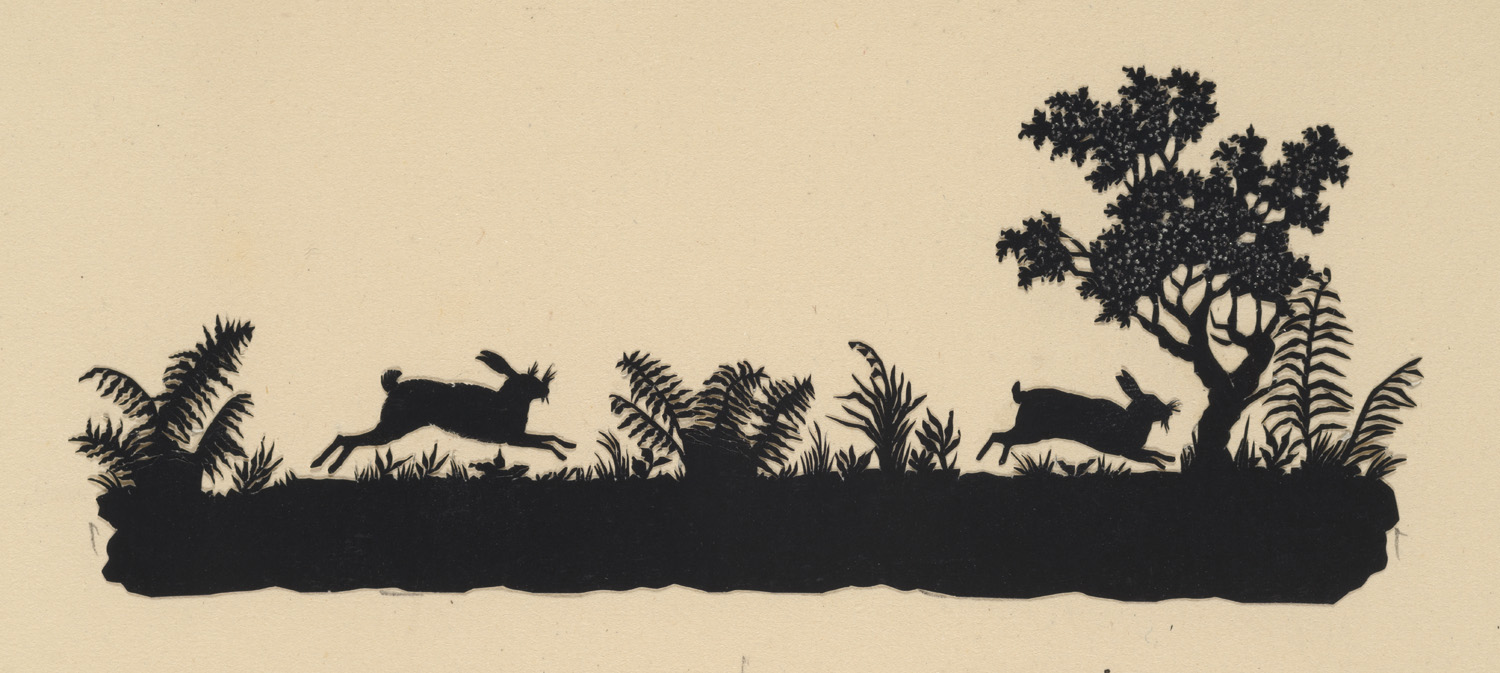
Fig. 17. Hare and rabbit by Miller, 1840s. Cut paper detail from an album page measuring 16 by 12 1/8 inches. Houghton Library.

Fig. 18. Entellus monkey by Miller, 1840s. Cut paper detail from an album page measuring 16 by 12 1/8 inches. Houghton Library.
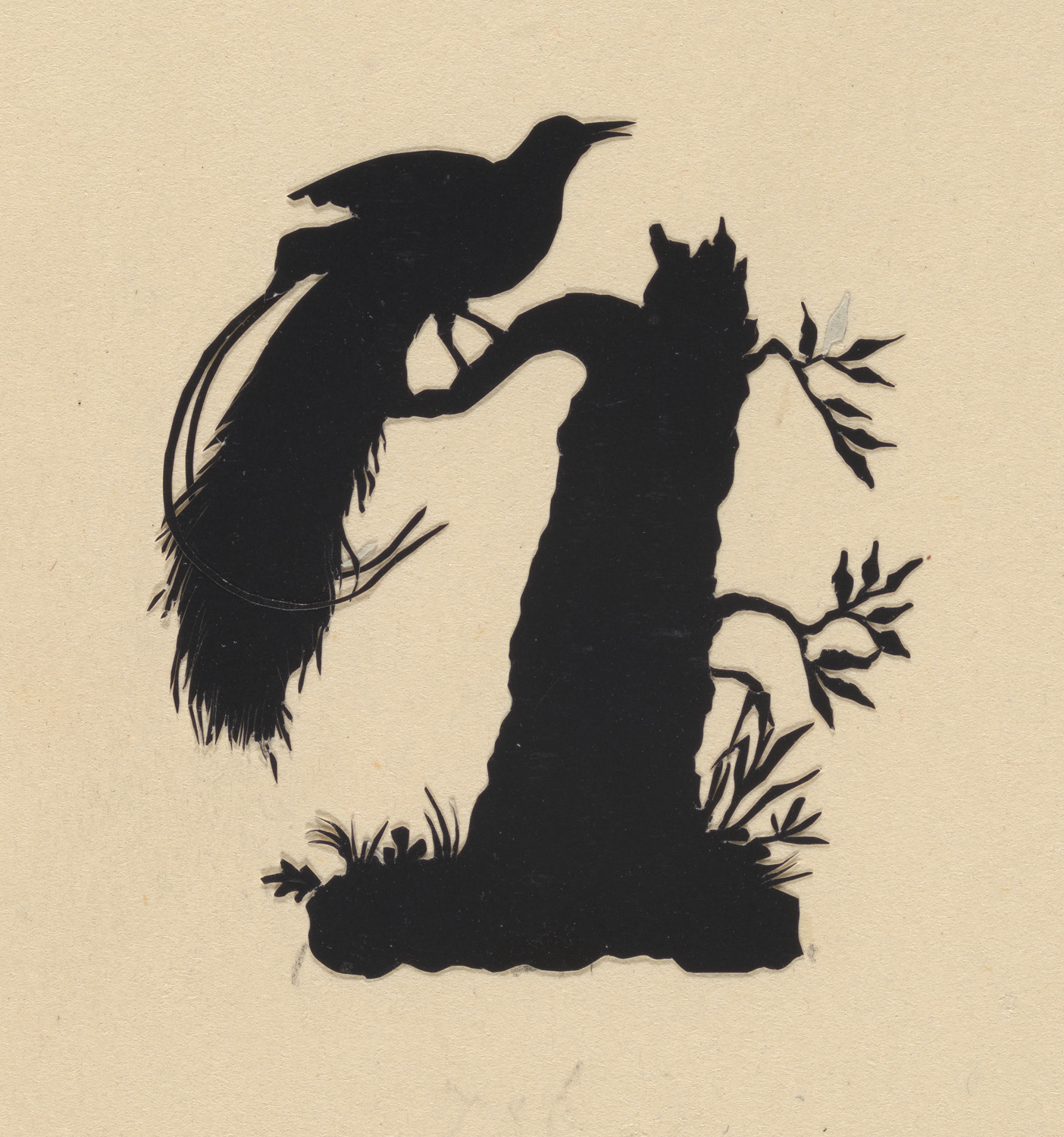
Fig. 19. Bird of paradise by Miller, 1840s, Cut paper detail from an album page measuring 16 by 12 1/8 inches. Houghton Library.

